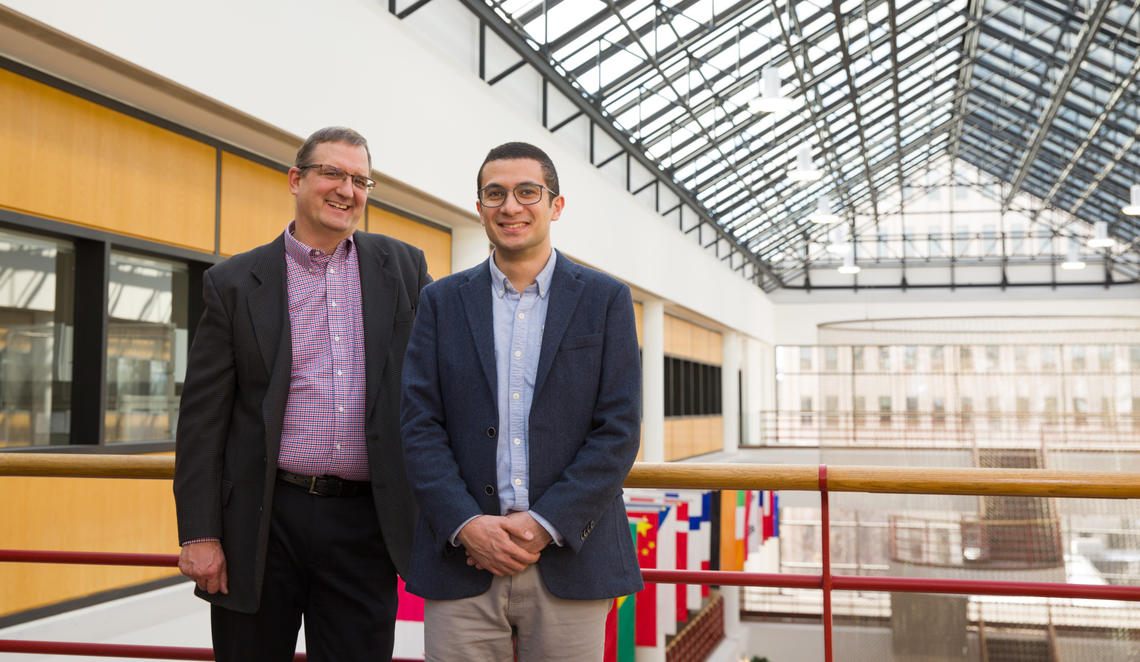May 26, 2020
Fake news detector: Digital supply chain reveals untrustworthy content

A powerful fake news detector can be created by employing the latest research of Dr. Raymond Patterson, PhD and Dr. Hooman Hidaji, PhD, both with the Haskayne School of Business. Their method, which focuses on analyzing the digital supply chain of a website, has a 97 per cent true positive rate, outperforming several fake news detectors currently available.
The innovative approach combining machine learning and heuristics was developed by Patterson and Hidaji along with their co-authors, Dr. Dmitry Zhdanov, PhD, Georgia State University, Dr. Ram Gopal, PhD, Warwick University, Dr. Erik Rolland, PhD, Cal Poly Pomona and Ms. Sule Kutlu, University of Connecticut, a collaboration across five major universities spanning the U.K., Canada and the U.S. Their research has been published in ACM Transactions on Management Information Systems.
An even more potent fake news finder can be created by combining their method with current content-based tools, thereby revealing both the trustworthiness of the source and the content. With stories easily going viral from social media channels, there is an increased need to ensure that news is real and reliable.
Business model revealed by digital supply chain
“Perhaps there are some news agencies which sometimes propagate real news and sometimes propagate false news, and our whole point was that’s a fool’s errand because they are very good at deception,” says Patterson. “But a tiger can’t change its stripes. At the heart of it all is a business model.”
Detecting untrustworthy news can be done by focusing on the content, examining articles for key words or patterns. The research team explored a new method, analyzing the third-party partnership data also known as the digital supply chain, to identify trustworthiness of websites.
“You can actually look at the business model of the website if you really could see the supply chains,” Patterson adds. “Until now you really couldn’t but with our tools we are actually able to pierce that first level of the veil and see, at least their initial, supply chain.”
In the first two to three seconds you connect with a website, there could be as many as 250 third parties that the website is connecting to. Advertising is usually the primary reason websites connect with third parties, followed by improvements to functionality and performance.
“These relationships are not easy to create between suppliers,” says Hidaji. “And there is also a self-selection from the supplier side. So let’s say it is a bad player, Google is not going to advertise on that website.”
Some websites, often those concerned with consumer privacy, may limit their third-party interactions. Some websites choose not to monetize. But the majority of websites will have a whole range of third-party suppliers who do things for them, with them and to them. And the researchers have found that commonalities and differences in third parties can accurately predict if a news website is trustworthy or not.
Machine learning tools figure out the patterns
The best method combined two approaches, significant third-party (STP) and support vector machine (SVM) and resulted in a true positive rate of 97 per cent and a true negative rate of 94 per cent.
“Our paper provides proof of concept. Is it practical? Does it work? Could this be taken further by other researchers?” says Patterson. “You put something out there and then the whole gang of researchers around the world chips in and over time you push the boundary of what is possible.”
Help limit fake news with information hygiene
While researchers work to improve the technology to detect fake news, there are several steps readers can take to help stop the spread of viral misinformation. Readers can practise good information hygiene which includes questioning what they read or hear. Fact check. Important decisions should not be based on information that is rumour, speculation or someone’s opinion.
Using online tools like these researchers are helping to develop can help in this step. But perhaps most important if the truth or validity of information is unsure, do not share it. Those that generate fake news rely on the sharing of the stories to move forward their business model, and by not sharing questionable material it can help to break a cycle of misinformation.

Raymond Patterson, left, and Hooman Hidaji’s research reveals fake news by tracking digital supply chains.
Riley Brandt, University of Calgary




